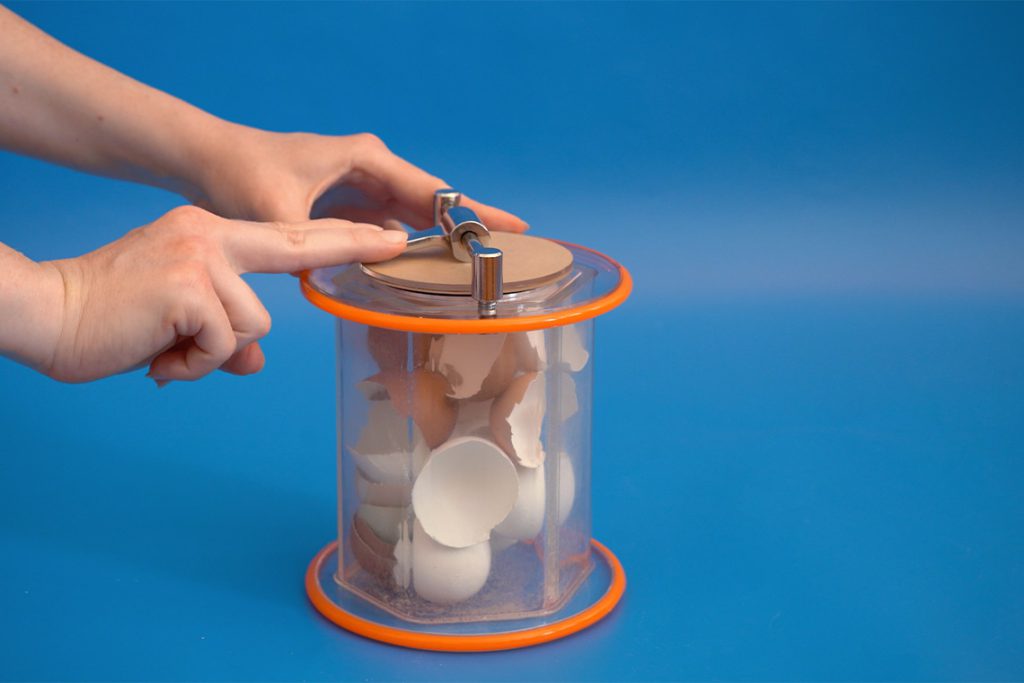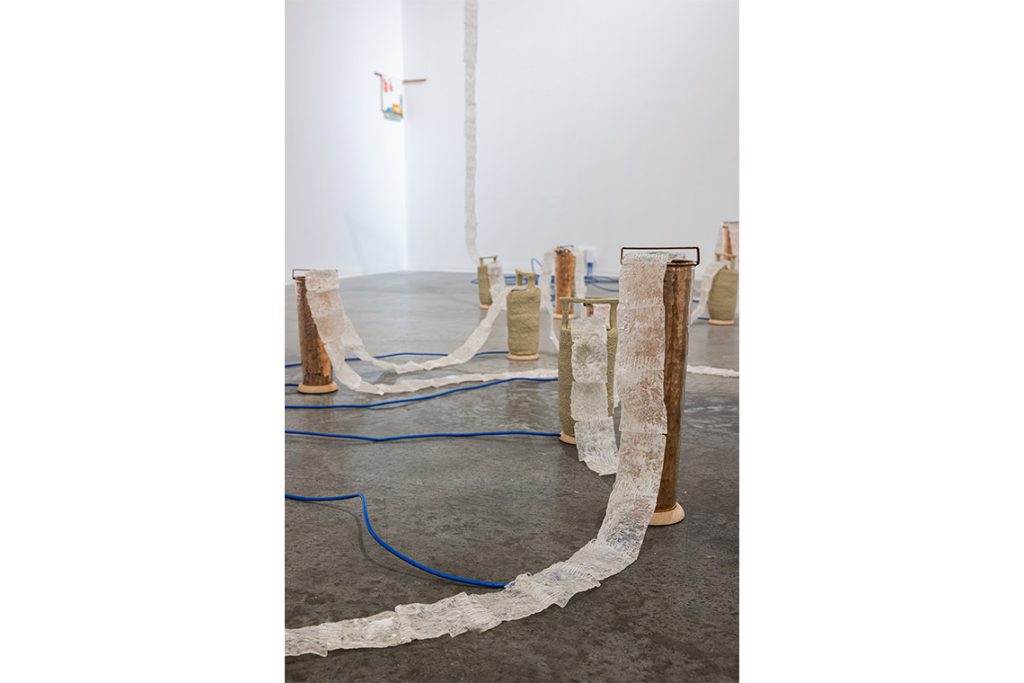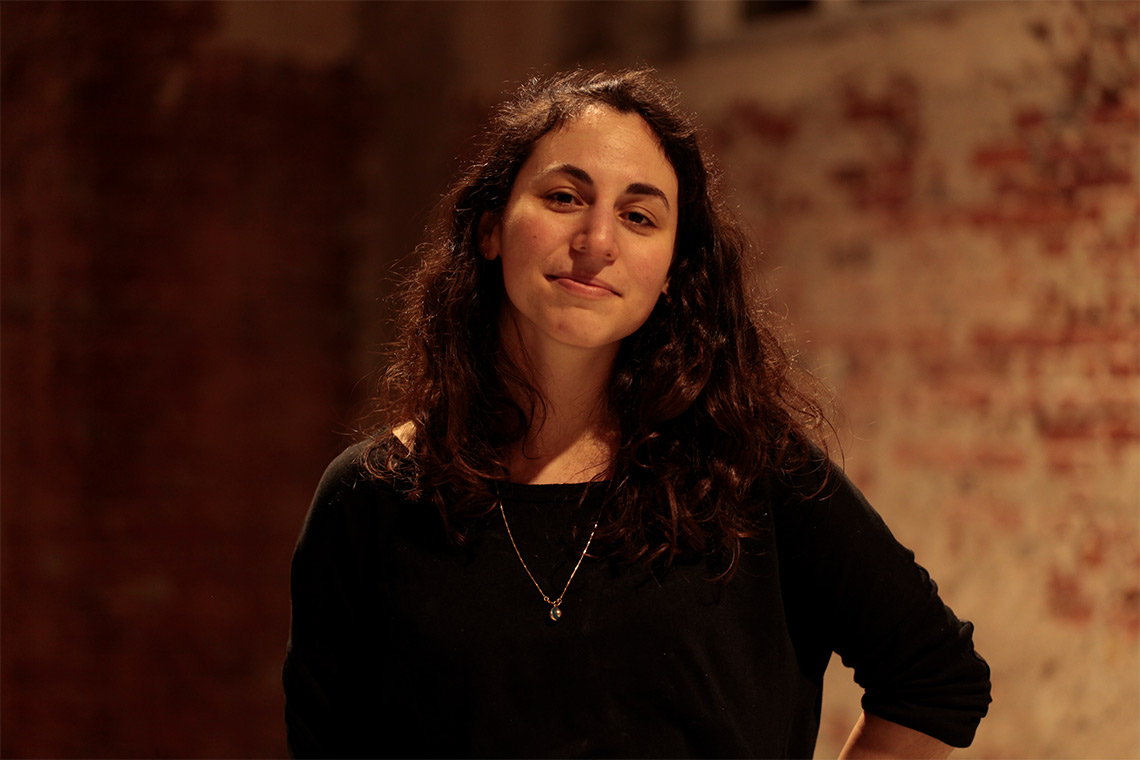The artist investigates different aspects of material, exploring the intricate relationships between human and non-human elements in nature.
Canvas: You completed your bachelor’s degree in sociology but then went on to study for an MFA. What sparked this transition to pursue an artistic practice?
Gülşah Mursaloğlu: It was something that I had always wanted to do. My parents were hesitant to encourage me to pursue art because they were worried about the financial difficulties that would come with this career path. For my bachelor’s degree, I studied political science and sociology, but later I wanted to follow my gut feeling and pursued a graduate degree in the arts. So I attended lots of drawing classes and prepared a portfolio, then applied for a master’s programme in the United States at the School of the Art Institute of Chicago. They initially accepted me for a post-baccalaureate, since I didn’t have a bachelor’s in art, and I enjoyed it so much. Most of the participants were people like me, coming from different fields. I learned a lot from that group and then did my MFA there as well.
Your work often investigates materiality and temporalities. How do you incorporate symbolism and natural elements into your art?
The materials I work with come with unique associations, so inevitably they conjure up certain symbols or narratives. For instance, this summer I undertook a video project, entitled A Chanting Egg Near the Dent (2024), which centred on the motif of the egg. My approach begins with a focus on the material nature of the objects with which I’m engaging. In this project, I specifically explored eggshells, immersing myself in their characteristics and conducting extensive research on eggs. Narrative is not my initial departure point, I rather prioritise understanding the material’s capabilities, how we relate to it and how we interact with it.
In your work Merging Fields, Splitting Ends (2019–21), you focus on the temporality of potatoes. What inspired you to explore them in this way?
The project has emerged as a long-term endeavour spanning several years. My engagement with the potato began in 2019, when I was invited to participate in a research group focused on this crop as part of the public programme for the Istanbul Biennial. This initiative was organised by an arts and ecology collective called birbuçuk, which structured the programme around the concept of digestion, with one of the five themes centred on the potato. This gathering included artists, scholars, activists and food writers who convened to discuss potatoes.

Gülşah Mursaloğlu. A Chanting Egg, Near the Dent. 2024. 4K video. 14 mins. Image courtesy of the artist
Given my ongoing fascination with material transformation, I was intrigued by the possibility of producing bioplastic from potatoes, a concept that I’d come across before. My initial attempts to create this bioplastic were largely self-directed and guided by numerous YouTube tutorials. However, I soon recognised the need for collaboration and assistance. I began working there with a biotechnology student named Konrad Czech, and together we explored this project in Berlin.
Merging Fields, Splitting Ends seeks to emphasise the concept of ephemerality through a gradual dissolution process, facilitated by water evaporation within the vessels. The system comprises bioplastics made from potato starch, combined with copper vessels, wherein heat serves as a binding element among the various materials.
Can you talk us through how you approach researching human and non-human connections to nature?
My artistic research is twofold. One aspect is hands-on experimentation, as demonstrated in my work on transforming bioplastics. The other aspect resembles academic research, although it does not adhere strictly to traditional academic frameworks. Instead, it is artistic research that is more spontaneous in character. I draw upon a wide range of sources, including literature, sociology and political science, to make sense of the material. One reference often leads to another, creating a web of interconnected ideas. For instance, while working on the potato project, I explored the writings of Carlo Rovelli, a physicist who articulates complex concepts of time in an accessible manner. This research process involves numerous references, but it is not linear, being rather non-linear and meandering in nature.

Can you elaborate on the significance of using materials like kaolin and microplastics in your work Devouring the Earth, in Perishable Quantities (2020–)?
The project began during Covid and served as a reaction to the unprecedented circumstances we faced. It prompted a deeper exploration of the limits of the human body, emphasising our interconnectedness. The pandemic highlighted that we are not isolated entities and that we are linked by the invisible elements that surround us – air, molecules and shared breaths.
During that period, I stayed with my mother and, like many others, we sought ways to understand and combat the crisis. She was given a bottle of clay, which she received from a pharmacist cousin, who suggested it could boost immunity. This sparked my curiosity about the lengths to which individuals go to protect their bodies. In my research, I delved into geophagy, the ancient practice of consuming earth. I became intrigued by the various materials and particles that inadvertently enter our bodies, questioning the extent to which our choices influence this process versus the agency of external substances.
Another compelling case I examined was that of arsenic, particularly its consumption by various communities as a means to boost immunity. This example intrigued me due to its radical nature. When I think of arsenic, I often recall alarming news reports about poisoning and harm. However, it is striking to consider that some communities deliberately ingest trace amounts of this substance. The project initially centred around questions regarding what enters the body and the decision-making processes behind these choices. The influences on our bodies are not solely the result of individual decisions – they comprise a complex network of interactions involving both human and non-human entities. This includes how what we consume, as well as contaminants in our sewage systems and urban water sources, intermingles and affects our bodies.
Are there any upcoming projects or themes you’re excited to explore?
I have an upcoming solo exhibition at Sanatorium in Istanbul this December. One of the key projects in this exhibition is the video work I referred to earlier, following the journeys of several eggs. I am also conducting an investigation into the concept of sleep, which has become a significant area of interest for me and I’m looking forward to developing that further.
This interview first appeared in Canvas 115: On the Wild Side



